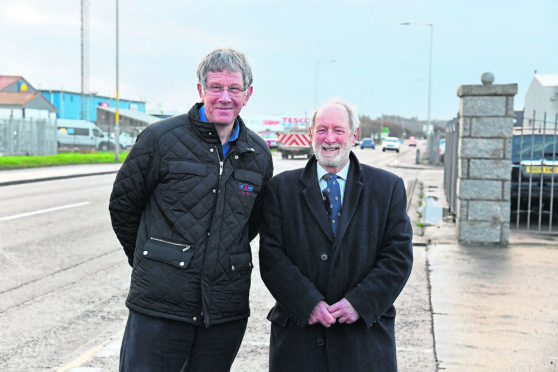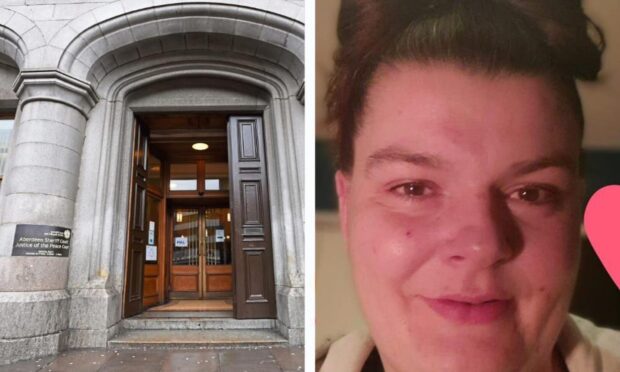A Fraserburgh street has been given back its original name after emergency services struggled to locate a burning business.
The town’s Gray and Adams yard was the scene of a major blaze in June that tested the abilities of 32 firefighters.
No-one was seriously injured and damage to the property is close to being repaired but there has been concern over the confusion 999 crews experienced en-route.
The company – which manufactures refrigerated trailers – uses the address of South Road, the historic name of the street which runs through the centre of Fraserburgh.
That name was, however, changed in 1909 to Maconochie Road in honour of the then Scottish Liberal MP for East Aberdeenshire, Archibald White Maconochie.
He and his brother were also producers of the famous – some would say infamous – canned meat and rations produced in Fraserburgh for Scotlands soldiers during the First World War.
Despite the 1909 name change, local residents and businesses continued to function using South Road as their address.
So when the blaze started and the address was given as South Road, Fraserburgh, crews arrived at South Harbour Road in a different part of town.
After calls from concerned business owners, the Banff and Buchan Area Committee has agreed the street name should revert back to South Road.
James Gray, who is co-managing director of Gray and Adams alongside his brother, said: “We were concerned, not just for ourselves, but for other businesses and residents, that if something happened then emergency crews might be sent in the wrong direction again.
“All other property owners know the road as South Road and everyone here uses it as their address – when there was a petrol station it was actually called the South Road Filling Station.
“Most people recognise the street as South Road.
“We’re delighted the councillors have been supportive of the name change which means it can be formalised now.”
Gray and Adams are in the final stages of rebuilding the warehouse where the fire occurred.
Mr Gray added: “We were lucky as we’ve enough buildings and machinery we could utilise, so we relocated the fibreglass department temporarily and kept production going.”
There are plans in place for three or four street name signs to be put up in the near future.
It is also hoped that electronic devices and, in particular, Google directions can be updated to stop the confusion from occurring again.
Fraserburgh councillor Charles Buchan said: “This matter shows local democracy in a very good light.
“Responding to the request from all the residents and businesses in the affected area, the local elected members worked together, along with concerned businesses, to decide how we could keep the well-known South Road name and make it official, so the emergency services and customers can be assured that their electronic devices do not mislead them.”
Archibald Maconochie
As well as being the namesake of the Broch street for the last 100 years, Archibald Maconochie was known for an offensive stew he and his brother produced for Scots troops during the First World War.
The notorious tinned meat and vegetable rations produced by Mr Maconochie and his brother James from their factory in Fraserburgh were refered to as “man-killers”.
Soldiers who ate the canned rations often complained of suffering from toxic wind.
The pair had relocated from their home in Suffolk to Aberdeenshire to start up a fish canning business in Fraserburgh after spotting a gap in the market.
After finding success in the canned goods industry, the brothers sold a range of different meals in this way – including their infamous stew.
Their meat and veg rations won them a contract supplying the British Army with food for the Boer War and then again for the First World War.
Rations of the stew which comprised of the “finest” beef, carrots, potatoes, onions and beans” brought mixed responses from the troops with records showing some found it palatable provided it was heated, per the instructions, for 30 minutes in boiling water.
But eaten cold on the frontlines, the congealed contents of each can were known for causing dreadful wind.
One book, Hell in the Holy Land: World War one in the Middle East, by David R Woodward, contains recollections from a soldier identified as “Calcutt”, who was a private in the 2/16th London Regiment, Queen’s Westminster Rifles, 179th Brigade, 60th Division.
He wrote in his diary: “One of the features of the night marches was the frightful stink.
“The Maconochie stew ration gave the troops flatulence of a particularly offensive nature.
“So we marched along in air released by hundreds of men breaking wind.”










